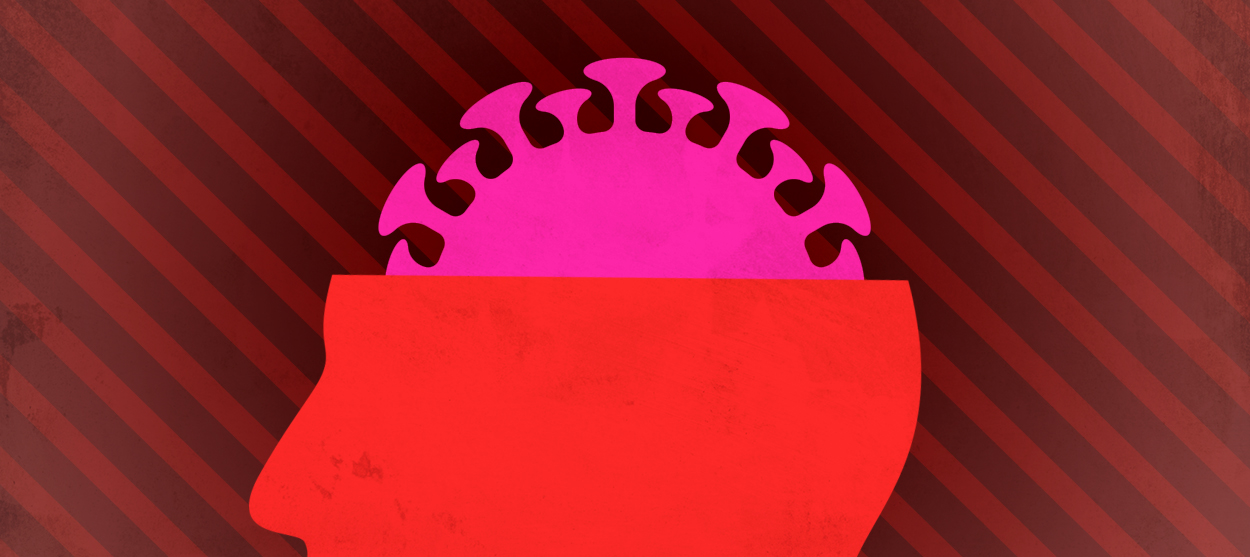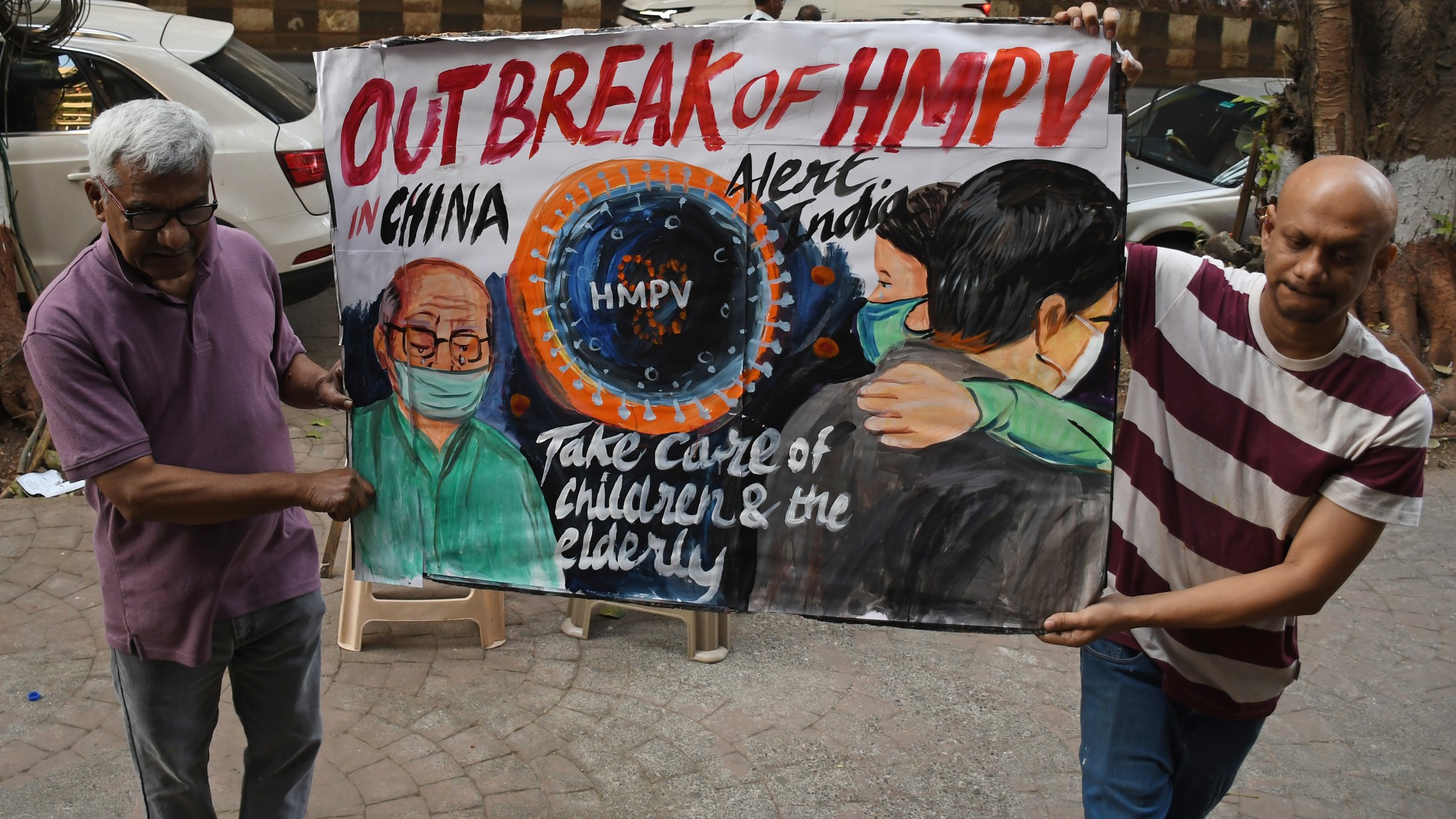The anatomy of a coronavirus conspiracy theory
The idea of a "plannedemic" makes no sense. So what are these conspiracists really afraid of?

Most conspiracy theories have some sort of basis in historical fact. The CIA really did have a mind-control program. The FBI knew more about Lee Harvey Oswald than it let on to the Warren Commission. The planes that smuggled guns into Nicaragua were also smuggling drugs out of Nicaragua. We frequently uncover secrets about the U.S. government that make the wilder conspiracy theories sound more plausible.
But it is hard to draw a line from the U.S. government's coronavirus response to the conspiracy theories circulating about that response. Conspiracists believe the pandemic, or "plannedemic," is a coordinated effort to hold American citizens hostage and institute martial law. They warn that sheltering-in-place and social distancing are not temporary measures but instead will become the new normal. The government will require us to receive some sort of "digital tattoo" or microchip implant before we are allowed to leave our homes and go back to work. And eventually, the conspiracists claim, there will be a mandatory rollout of tainted vaccines concocted by the same mysterious forces that concocted the "COVID-1984" virus: vaccines that will render us infertile, docile, or dead.
How does this square with the federal government's documented actions? If anything, the government has been guilty of downplaying the threat posed by the virus, not exaggerating it. They have demonstrated a grievous lack of planning for this supposed "plannedemic." And rather than attempting to parlay the temporary economic lockdown into something more permanent, the president is eager to end it as soon as possible, so the stock market can go up and unemployment can go down in time for his re-election. When protesters around the country demanded that the economy reopen, Trump didn't call them enemies of the state; he celebrated them. If the Trump administration's secret goal is to provoke mass hysteria, shut down the economy permanently, and cancel democracy, it is not doing a good job.
The Week
Escape your echo chamber. Get the facts behind the news, plus analysis from multiple perspectives.

Sign up for The Week's Free Newsletters
From our morning news briefing to a weekly Good News Newsletter, get the best of The Week delivered directly to your inbox.
From our morning news briefing to a weekly Good News Newsletter, get the best of The Week delivered directly to your inbox.
There are other narratives being spun about the coronavirus which at least have greater internal logic. Small-government conservatives at outlets like The National Review and the Wall Street Journal argue that, yes, the federal government's response has been weak — and this is a good thing. They champion what corporations, nonprofits, and state and local governments are doing to combat the virus. Where conspiracists see the ascendance of tyranny, many conservatives see a vindication of capitalism and federalism.
Meanwhile, traditional nationalists like Tom Cotton, Josh Hawley, and Steve Bannon see the pandemic as a chance to vilify China and the World Health Organization. They call for greater national autonomy and stronger border control, which have indeed been the clearest aspects of the White House's coronavirus response. Conspiracists, however, are less interested in vilifying China, which they see as a pawn in a greater scheme. They frequently claim the pandemic is a hoax, in which case border control would be irrelevant.
There are at least two explanations for this dissonance between the conspiracist imagination and the federal government's actual policies. One is that we may be witnessing the decline of "fusion paranoia" and the repolarization of conspiracy theories, so that conspiracists no longer denounce the government per se. Another is that the real source of conspiracist angst isn't the government, but rather the citizens who are willingly giving up their freedom.
The term "fusion paranoia" was first coined by journalist Michael Kelley in 1995, as the conspiracy theory movement was becoming an increasingly baroque fusion of the left- and right-wing fringes. This was a distinct break from the Cold War, when conspiracy theories were more ideologically contained. Right-wing conspiracists focused on the threat of communism, while left-wing conspiracists focused on the anticommunist right.
A free daily email with the biggest news stories of the day – and the best features from TheWeek.com
These Cold War conspiracists did not fear the government itself, but rather cabals working to subvert the government. Conservatives defended the State Department while they decried the communists who had infiltrated it. Liberals castigated the military-industrial complex while they propped up John F. Kennedy as a martyr, ignoring his record as a foreign-policy hawk. The big revelation in the Watergate-era thriller Three Days of the Condor wasn't that the CIA was crooked; it was that there was "another CIA in the CIA."
With the fall of the Soviet Union, ideological battle lines blurred. Alex Jones became an Austin counterculture darling, while Gore Vidal wrote a glowing Vanity Fair profile of fellow anti-imperialist Timothy McVeigh. White nationalists co-opted black nationalist accounts of the crack epidemic; religious skeptics cribbed from fundamentalist Christian tracts claiming barcodes were the sign of the Beast; self-identified liberals counted the Clintons' murder victims, while conservatives parsed through George H. W. Bush's 1990 speech proclaiming a "new world order."
Conspiracism was no longer tethered to any partisan ideology, no longer caught up in the cat-and-mouse game of communist vs. anticommunist. As Kathryn Olmsted explains in her history of conspiracy theories, the post–Cold War left and right "found a common enemy to fight in their defense of the republic: their own government."
But the election of Donald Trump may have repolarized our paranoia. Jones, who was no more a fan of George W. Bush than he was of Barack Obama, firmly believes Trump is on his side. When he lists the members of the plot to weaponize the coronavirus, he includes the "blue cities" and "blue states," Hollywood and the mainstream media, the universities, the medical industry, communist China — but he leaves out the Trump administration.
Rather than blaming the U.S. government for unleashing the virus and shutting down the economy, right-wing conspiracists blame "the globalists" working inside and outside the government. Ben Garrison, the "alt-right's favorite cartoonist," portrays Trump in the backseat of a car, asking, "Are we there yet?" (i.e., when can the economy restart); sitting up front are his public-health advisers Anthony Fauci and Deborah Birx, who syly grin and respond, "In a few more months!... Maybe." Like Oliver Stone's JFK, Trump is trying his best but is undermined by sinister forces outside his control.
Bill Gates looms oddly large in these paranoid narratives — Jones and Roger Stone believe the Gates Foundation manufactured the coronavirus, and in Garrison's cartoon Birx is wearing a Gates Foundation button. Another Garrison cartoon has Bill Gates (looking rather like a Protocols-esque Jewish caricature) unrolling a scroll that lays out his coronavirus plot: Stage 1 is "fear," Stage 3 is "shutdown and social distancing," Stage 5 is "martial law and checkpoints," and the last stage ("Stage 666") is the "mandatory vaccine rollout."
Gates is singled out not just because of his enormously wealthy foundation that has spent hundreds of millions on fighting the virus, but also because of his history as a software developer. Conspiracists frequently tie the "plannedemic" to the allure of new technology, from 5G mobile networks to VR headsets, because they fear that the seductiveness of technology is the New World Order's model for controlling all aspects of life. The globalists "seduced and beguiled everyone," Jones claims, with an "extended spring break" and "nice big juicy checks." The endgame is for everyone to be "put into our little bubbles, our little pods," where you have to get permission from an app to leave your home — conveniently enabled by Microsoft, Apple, and other tech companies.
Conspiracists fear this plot will succeed if American citizens let themselves be manipulated. Jones calls our efforts to flatten the curve — staying inside, washing our hands, wearing masks, meeting people on Zoom, keeping six feet from each other at the grocery store — "little rituals" of "submission," and we must stop performing them if we want to be free. Popular podcast host Joe Rogan, who is less of a conspiracy theorist but is certainly conspiracy-curious, laments that "people are willing to give up certain civil liberties if they think they can get more safety." And while he concedes this is necessary for the time being, he asks, "what if it just sorta stays that way?" What is the price of our submission?
Jones explains the choice Americans face with a bizarre, violent, lowkey-racist allegory: imagine you stop at the grocery store "on your way back home from church on a Wednesday night," and as you return to your car, a couple of "thugs … pull knives on you" and ask for "everything you got" and start coming on to your wife. Jones says you can let the thugs tie you up and take you to your house, where they'll get the codes to your safe, violate your wife, and "kill you while you cry." Or, Jones posits, you can "explode" in the grocery-store parking lot, "rip the knife out the guy's hand, and stab it right into his throat." This is analogous to our current situation, he insists, with the globalists standing in for the thugs: "You are under lockdown, you're under martial law. And it's just gonna get worse the more you submit to it."
Conspiracists are drawn to this fantasy of domination and submission because they refuse to accept that people are willingly surrendering their individual autonomy for the common good. Americans are looking out for each other, staying home even when they're not especially at risk, and calling on the government to take care of their basic needs. No one is drawing a knife on us.
This is too much for the conspiracist to bear. Their libertarian worldview is seemingly repudiated by the fact that, when faced with such a serious crisis, Americans are, by and large, not behaving like libertarians. It is easier for conspiracists to believe the pandemic is a globalist plot to brainwash us than to believe that Americans will give up certain freedoms with little if any pressure from any government or cabal — that a little bit of peer pressure and genuine selflessness is all it takes. Behind the fear of a conspiracy, behind the fear that citizens will be easily duped, is a greater fear: that no conspiracy is necessary.
Bill Black teaches history at Western Kentucky University. He is a founding editor at Contingent and has written for The Atlantic, Vox, MEL Magazine, and Aeon.
-
 Covid-19 mRNA vaccines could help fight cancer
Covid-19 mRNA vaccines could help fight cancerUnder the radar They boost the immune system
-
 The new Stratus Covid strain – and why it’s on the rise
The new Stratus Covid strain – and why it’s on the riseThe Explainer ‘No evidence’ new variant is more dangerous or that vaccines won’t work against it, say UK health experts
-
 RFK Jr. vaccine panel advises restricting MMRV shot
RFK Jr. vaccine panel advises restricting MMRV shotSpeed Read The committee voted to restrict access to a childhood vaccine against chickenpox
-
 RFK Jr. scraps Covid shots for pregnant women, kids
RFK Jr. scraps Covid shots for pregnant women, kidsSpeed Read The Health Secretary announced a policy change without informing CDC officials
-
 New FDA chiefs limit Covid-19 shots to elderly, sick
New FDA chiefs limit Covid-19 shots to elderly, sickspeed read The FDA set stricter approval standards for booster shots
-
 RFK Jr.: A new plan for sabotaging vaccines
RFK Jr.: A new plan for sabotaging vaccinesFeature The Health Secretary announced changes to vaccine testing and asks Americans to 'do your own research'
-
 Five years on: How Covid changed everything
Five years on: How Covid changed everythingFeature We seem to have collectively forgotten Covid’s horrors, but they have completely reshaped politics
-
 HMPV is spreading in China but there's no need to worry
HMPV is spreading in China but there's no need to worryThe Explainer Respiratory illness is common in winter

